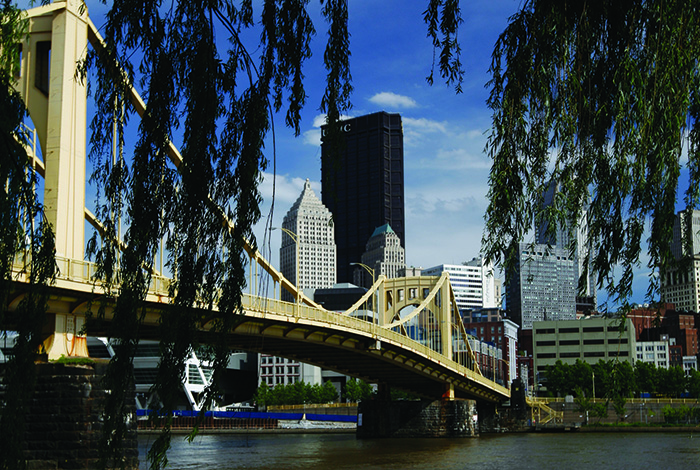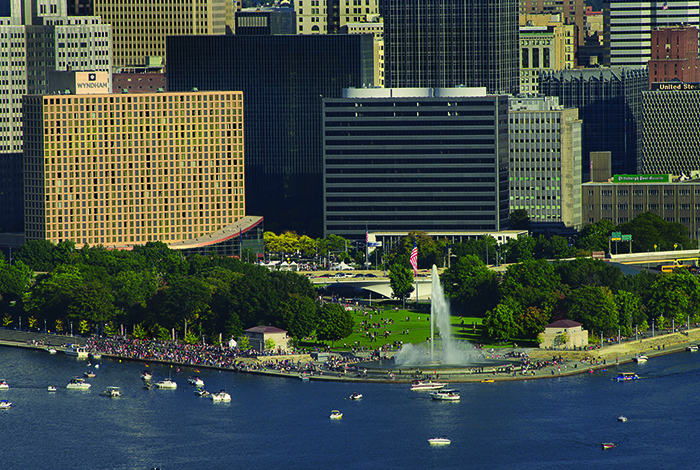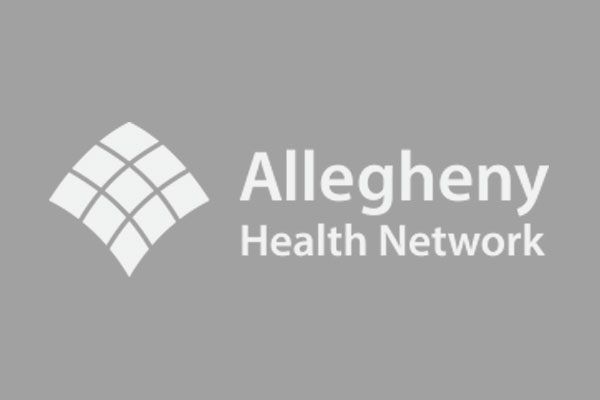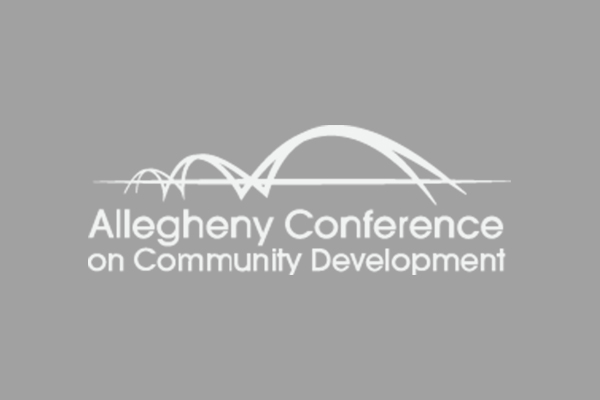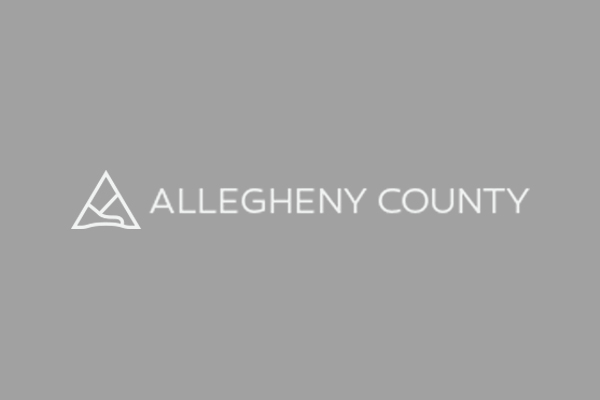
It started with the rivers. When you consider the topography of Western PA, there certainly weren’t many other reasons to stop and settle along the steep hillsides and forests of Pittsburgh. But the watersheds that created the rivers that meet in Pittsburgh gave life to the region, and eventually to indigenous tribes and settlers from Europe.
“The rivers were the first superhighways. We fought a war over them, the French and Indian War,” notes Tim White, senior vice president of development for the RIDC of Southwestern PA. “The railroads were the next superhighways. Now it’s vehicle traffic but there is still a tremendous amount of material moved by rail. When people say riverfronts, you need to think of them as highway exits. Where riverfronts were developed, it was to give access to the river and the railroads.”
White’s concise summary takes you from the period of fur trading right up through the industrialization of Southwestern PA. Ideal for moving large amounts of material cheaply, the rivers were the arteries that carried coal, coke and iron to the factories for steel manufacturing. It was a happy coincidence for Pittsburgh that its rivers connected conveniently from the coal mines in West Virginia, Fayette County and Greene County to the Gulf of Mexico. That geographic coincidence put Pittsburgh at an economic confluence as well, especially when the developed world needed to be rebuilt after World War II.
That economic benefit was also an environmental disaster, however. There were communities throughout Southwestern PA that offered a river lifestyle but by the 1970s, the rivers were industrial and commercial transportation arteries. Pollution made them lifeless. Many of the facilities located on the riverfronts turned their backs to the rivers. As a result, Pittsburgh found that its rivers stayed undeveloped while most of the world’s best real estate was next to water.
One of the ironies of the last 30 years is that the economic distress caused when manufacturing collapsed in Western PA resulted in environmental relief for our rivers. As nature reclaimed the waters of the Monongahela, Ohio, Allegheny and Youghiogheny Rivers, government and civic leadership worked to make the land along the rivers usable. Advocacy groups gained strength. Sites were cleaned up or sealed off from environmental problems. What remained strangely missing during this era was demand for new development along the rivers.
After a decade of preparation, a few developments began to test the theory that the riverfronts would again be economic hubs. Combined with public investment to connect the land directly to the rivers, riverfront development began to gain steam in the 2000s. Over the past decade, the lessons learned about how people want to relate to the rivers have led to a riverfront development renaissance. And as this shift in focus towards riverside lifestyle is gaining momentum, a new opportunity has the potential to bring industrial vitality to the waters of Southwestern PA.
As the 2020s approach, there is real potential for thousands of people to live within a block or two of one of the region’s waterways for the first time. At the same time, thousands of jobs may be created in new plants built to serve a different basic industry. This new confluence will present challenges to the economy and the environment, as corporations and communities try to balance economic growth with environmental stewardship.
Livable Rivers
The Allegheny Conference on Community Development today operates more in the realm of economic development and business attraction, but at its inception the Conference was formed to unite business and government to clean up Pittsburgh. And one of its first accomplishments was the partial restoration of Fort Duquesne and the development of Point State Park. A former mill site, the Point represented the confluence of the three rivers, the very reason Pittsburgh developed in the first place. That project was one of the first steps away from the destruction of the rivers and the environment that Rachel Carson described. But for the next 30 years, it was still industry that made the greatest use of the waterways.
Later, as it became more and more apparent that there were no steel companies coming back to start up those shuttered by U.S. Steel, J & L and the like, local leaders began to look at the rivers in Western PA as assets of a different type. There were millions in aid flowing into the region for job training and placement in the 1980s but there were also funds coming from Washington DC and Harrisburg to bring the small towns and mill sites to a cleaner and more beautiful state.
As the rivers healed, recreational use increased. Pittsburghers were like the rest of Americans in that they were looking to be more active. Advocates looked to make the riverfronts available to as many of the citizens of Western PA as possible. Old rail lines, which often ran along the rivers, were being reclaimed as bike and hiking trails. Runners, who enjoy flat, long trails, were looking at riverfronts as excellent training paths. In 1994, one of those runners, Tom Murphy, was sworn in as mayor of Pittsburgh.
It’s often forgotten that the Murphy administration inherited one of the first of the major riverfront redevelopment projects, Washington’s Landing. The live/work community was developed by the Rubinoff Company on Herr’s Island. Without the publicly-funded environmental cleanup the project was impossible. The addition of a trail and infrastructure improvements by the Urban Redevelopment Authority (URA) linked the island to the North Side and Downtown. Today, residential property values on Washington’s Landing are among the highest in the city and the boat house is thriving for rowers and kayakers.
An advocate for the outdoors and the positive impact natural amenities add to the quality of life in Pittsburgh, Murphy supported protection of the riverfronts and included the input of advocacy groups in the planning process. In 1999, a coalition of those advocates and civic leaders formed Riverlife, which became the leading voice for safeguarding the rivers and setting standards for riverfront development.
Riverlife was often seen publicly as a voice calling for commercial development to be bent to a new vision but the organization was probably more effective at planning, organizing and marshalling resources to create opportunities for greater access to the rivers. For the past 16 years, much of the signature riverfront development has been aided or augmented by a handful of significant projects that changed dead riverfronts into parks and trails.
The most ambitious of these projects was the Great Allegheny Passage, a multi-decade project that combined riverfront trails, abandoned rail beds and overland trails to connect Pittsburgh to Washington, DC. Several pieces of that Passage made enormous impact on unrelated commercial development. The improvements to Point State Park and the construction of parks and trails along the Allegheny and Monongahela provided recreation space and links to other trails for the thousands of new residents Downtown. The North Shore riverfront park gave walking, biking and boating access but more importantly provided direct access from the park to the major league sports stadiums, restaurants and offices on Pittsburgh’s North Shore. The success of South Side Works – another transformational urban lifestyle development at the time – was augmented by the South Shore Riverfront Park.
South Side Works may have been the prototype for how riverfront development transformed in our region. Planning began on the project in the mid-1990s, when most commercial development on the rivers turned its back to the water. During the lengthy planning process, the impact of new thinking about riverfront development impacted the design very directly.
Mark Dellana, executive director for Genesis Partners, headed development for Soffer Organization during the construction of the South Side Works. He recalls that the orientation of the project towards the waterfront was part of the planning.
“It was part of the visioning plan from the very beginning to connect the neighborhood to the rivers. The 34 acres of South Side Works was the only place where you could connect directly to the rivers, where there was a bridge and the railroad didn’t block the access.” Dellana credits the role of the South Side Local Development Corporation with strong advocacy for the river access. “The stakeholders in the community and the city wanted it on the plan. So it was always part of the master plan,” he says.
Each of these projects involved the kinds of partnerships that Pittsburgh has become known for assembling effectively. Government agencies, funded by public grants and philanthropic organizations, worked with private developers to realize the vision of using commercial development to provide greater access to the rivers for residents. That formula has transformed riverside activity in small communities outside the city as well. While the public objective was to enhance the riverfronts, the parks and trails have the dual benefit of enhancing the private development, raising occupancy and rents.
Vivian Li joined Riverlife as its new president and CEO in October 2015 after a lengthy stay at Boston Harbor Association. With earlier government planning and redevelopment stints in Newark and in Boston under her belt, Li has seen the impact riverfront advocacy can make on private development success.
“When I think of the waterfront cities in this country – whether it’s New York or Hoboken or Boston or in Pittsburgh – people 30 or 40 years ago really thought of the waterfront for industrial activity, because that’s what it was used for,” Li says. “There were practices back then of pollution, whether it was by industry or when we flushed our toilets. In Boston, that land was the Navy Yard; it was the Army base, and the terminus of railroads. People are now getting upwards of $1,200 to $1,500 per square foot for residential because they have a waterfront view.”
In the cities Li cites, the cleanup of waterways to eliminate sewage, bad smell or oil sheen, has made the land more valuable. Whether it’s for commercial or residential usage, waterfront property has become some of the most expensive in the city. Those dynamics are good for developers.
Li points out that all of the improvements made along urban waterfronts have one thing in common: they bring more people to the area. That supports the shops and restaurants along the waterfronts, bringing A-credit tenants and better rents.
“The evolution of the relationship between the more environmentally-focused organizations and real estate developers has really changed. We’re in it together. They may not like the details of what we want them to do, but the cleanup, the fact that there’s public access, the fact that there are more people, that fact that there are 24/7 neighborhoods, they like that. And we collectively work towards that.”
Rivers of Industry
It was the demise of heavy manufacturing that led to the revitalization of the rivers in Western PA. If for nothing else than the sheer amount of land that has been redeveloped, especially along the Monongahela River, the loss of industry allowed for commercial real estate to re-engage with the rivers. But of course the shutdown of heavy industry also gave the rivers a chance to recover ecologically too. A generation of recreational boaters and outdoors enthusiasts never had the experience of the rivers at their worst and can’t truly imagine the magnitude of that change.
Not all of the economic change has been about lifestyle shopping centers or apartments. One of the early players in the effort to turn around the former mill sites was the RIDC of Southwestern PA. The current president of the RIDC, Don Smith, likes to say that part of the RIDC’s charter is to develop when no one else will and that was certainly the case in the 1980s. But the highest priority was not the rivers.
“It’s hard to imagine today because the market is significantly different. [RIDC] got into it when heavy industry was collapsing and the thought was to replace the jobs by putting new industry there,” explains Tim White.
The first question was brownfield redevelopment rather than riverfronts. One of these redevelopments, the Pittsburgh Technology Center, which sits between Second Avenue and the Monongahela River, is on the site of part of Jones & Laughlin Steel’s massive plant. RIDC also undertook reclamations of former mills in McKeesport and Duquesne, where successes came in the form of multi-tenant incubators and a handful of light industrial buildings.
A very different type of developer saw an opportunity in the reclamation of J & L’s massive Aliquippa Works on the Ohio River. C. J. Betters Enterprises was able to profit from the demolition and scrapping of the former mill and the mill’s site. Over the period of almost two decades, the site attracted the county prison and several manufacturing facilities, including a drywall plant for U.S. Gypsum.
Successes like these did not lead to a rebirth of manufacturing. Instead, economic development efforts helped create a series of smaller victories over a long period of time. It was a game of singles and doubles rather than home runs. Redevelopment shifted from manufacturing employment to lifestyle uses. It was a game plan that was slowly changing the face of Western PA. That game plan changed with the Marcellus Shale play.
The boom in natural gas exploration in Pennsylvania and Eastern Ohio has, in just a few years, created the potential for a rejuvenation of manufacturing in the region that could bring a boom in industrial development along the rivers where steel was once made.
From the beginning of the Marcellus play, the companies involved promoted the fact that the economic benefit to Western PA would come after the early stages of exploration, when the output of the ethane available from the wet gas could be proven and the manufacturing of ethylene and polyethylene would begin. That concept gained shape in March 2012, when Royal Dutch Shell announced that it had chosen the Horsehead Corp. site in Monaca as the preferred site for an ethane cracker. That decision, and the subsequent evaluation process, kicked off four years of anticipation and trepidation. With hundreds of millions of dollars invested in engineering and site preparation for the project, Shell appears to be poised to finally make the final investment decision this year.
A decision to proceed will precipitate a decade-long reaction that will have significant impact on the rivers of Western PA.
There has been significant measurable economic benefit from the cleanup of the rivers in Greater Pittsburgh. Like in the cities that Vivian Li speaks of, Pittsburgh’s riverfront real estate has skyrocketed in value because of the appeal of living next to attractive useable waterways. Residents of the new Hot Metal Flats, The Yards at 3 Crossings, Cork Factory Lofts or the planned Mill at Second Avenue are drawn to rivers that offer safe and clean recreation, not waterways that glisten with fuel or pollution. Advocates for riverfronts understandably feel that trading industrial jobs for livable rivers will be cutting off our nose to spite our face.
Shell and its competitors will be subject to regulatory approvals and oversight that didn’t apply to the steel industry. The petrochemical companies have assured Pennsylvania that their processes are safe and that the rivers on which the plants sit won’t be polluted by their activities.
One aspect of this nascent industry that is different from the manufacturing that once dominated Pittsburgh’s landscape is its logistics. The location of crackers on the rivers is not for the use in shipping products, at least if Shell’s model is an indication. The Monaca plant will be built from the river, as sections of the plant are constructed modularly offsite and barged to the construction site. But Shell plans to move its product, principally polyethylene pellets, by rail. Throughout the Three Rivers basin, rail lines parallel the rivers, making the location of riverfront sites logical for both purposes.
Keeping the Rivers Balanced
Almono. 3 Crossings. Uber Research. Station Square East. Edgewater. Riverfront Landing.
These are but a half-dozen of the major commercial developments that are underway or in the pipeline that will continue the transformation of Pittsburgh’s waterfront. For varying reasons, most of the projects would have been unthinkable just a decade ago, before Pittsburgh residents saw what it was like to look at the rivers again. Replacing factories for houses, offices and shops has been good for the region. What the riverfronts look like today is the new image of Pittsburgh, what people outside of Western PA are finally realizing.
It’s also difficult to argue that the Pittsburgh of today would even exist without those steel mills. Many of the things that we hold most dear as Pittsburghers – our ethnic groups, the many neighborhoods, the gritty urban landscape – are a direct result of the allure of jobs that the mills offered. As a 21st Century city that desperately needs to attract population to meet the needs of its future employers, Pittsburgh will benefit economically from the growth of a new industry in the coming decade.
The balance between living along the rivers and working on them will be the key to whether the “new” Pittsburgh continues to be a model of revitalization. Polluting the rivers and making riverfronts toxic again will be a loss for the region, regardless of the gain in gross domestic product. One of the secrets unearthed in Pittsburgh’s recent renaissance is that there was still a lot of money here; there was just no place to spend it. Making the environment unlivable again would chase those investment and entertainment dollars elsewhere again.
It’s also tough to reverse from the course that has been followed over the past 20 years. Humans may ignore what they know to be true but we can’t un-know it. What Pittsburghers know from the past 20 years is that the riverfronts are an important part of Pittsburgh’s new economic equation. Balance may be difficult to achieve but economic history is on its side.
“When we write the history of urban centers that have waterfronts, it’s a very different situation today versus the relationship 20 or 30 years ago, and certainly how waterways were viewed 40 or 50 years ago,” remarks Vivian Li. “They were the dumping grounds. It doesn’t matter what the city. Today waterfronts are the most valuable properties.”


